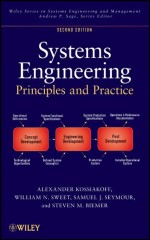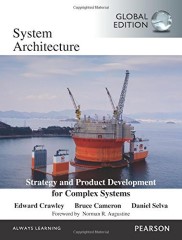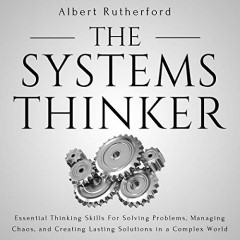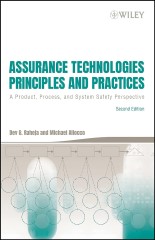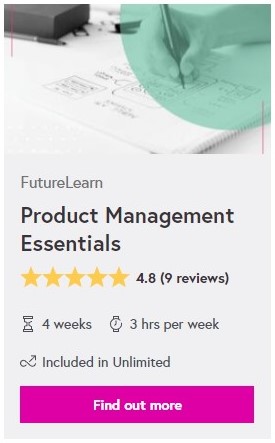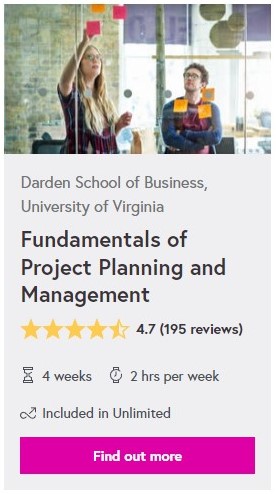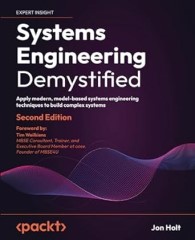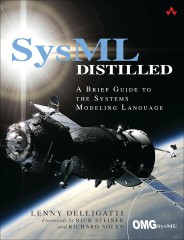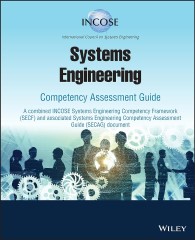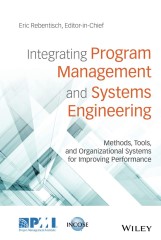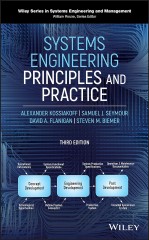Well-written requirements form the foundation of successful systems engineering projects. Poor requirements lead to cost overruns, schedule delays, and systems that fail to meet stakeholder needs. This comprehensive guide presents the 42 rules for writing excellent requirements, based on the International Council on Systems Engineering (INCOSE) Guide to Writing Requirements. These rules represent the systematic approach to Requirements Quality Engineering – the disciplined process of ensuring requirements possess the characteristics necessary for successful system development. The rules are organized into 12 categories that systematically address every aspect of requirement quality, from basic accuracy to complex organizational structures.
Table of Contents
- Introduction
- 1. Accuracy Rules (R1-R9): Building the Foundation
- 2. Concision Rules (R10-R11): Eliminating Waste
- 3. Non-Ambiguity Rules (R12-R17): Crystal Clear Communication
- 4. Singularity Rules (R18-R23): One Thought, One Requirement
- 5. Completeness Rules (R24-R25): Self-Contained Statements
- 6. Realism Rules (R26): Achievable Targets
- 7. Conditions Rules (R27-R28): When Requirements Apply
- 8. Uniqueness Rules (R29-R30): No Duplication
- 9. Abstraction Rules (R31): Appropriate Level of Detail
- 10. Quantifiers Rules (R32): Clear Scope
- 11. Tolerance Rules (R33): Realistic Ranges
- 12. Quantification Rules (R34-R35): Measurable Targets
- 13. Uniformity of Language Rules (R36-R40): Consistent Communication
- 14. Modularity Rules (R41-R42): Organized Structure
- Implementation Strategy for Requirements Quality Engineering
- Common Pitfalls and How to Avoid Them
- Verification and Validation in Requirements Quality Engineering
- Conclusion
- References
Introduction
Requirements are the bridge between stakeholder needs and system implementation. They serve as the formal agreement between customers and developers, the basis for design decisions, and the criteria for verification and validation. Despite their critical importance, requirements are often poorly written, leading to misunderstandings, rework, and project failures.
What is Requirements Quality Engineering?
Requirements Quality Engineering is the systematic application of proven principles, rules, and practices to ensure that requirements possess the characteristics necessary for successful system development. This discipline goes beyond simply writing requirements – it encompasses the entire process of crafting, reviewing, organizing, and maintaining requirements that truly serve their intended purpose.
The INCOSE Requirements Working Group has developed a comprehensive framework for Requirements Quality Engineering, distilling decades of systems engineering experience into 42 specific rules. This framework represents the gold standard for professional requirements engineering practice.
Recommended Further Reading Amazon BooksThe 15 Essential Characteristics of Quality Requirements
Quality requirements possess 15 essential characteristics at two levels:
- Necessary – Required to satisfy a lifecycle concept, need, or higher-level requirement
- Appropriate – Suitable to the level of the entity to which it refers
- Unambiguous – Can be interpreted in only one way by all intended audiences
- Complete – Sufficiently describes the necessary capability without further amplification
- Singular – States a single capability, characteristic, constraint, or quality factor
- Feasible – Can be realized within entity constraints with acceptable risk
- Verifiable/Validatable – Structured so realization can be verified/validated
- Correct – Accurate representation of the source from which it was transformed
- Conforming – Follows approved standards and patterns
- Complete – Set stands alone and sufficiently describes all necessary aspects
- Consistent – Individual requirements don’t conflict and use homogeneous language
- Feasible – Set can be realized within constraints with acceptable risk
- Comprehensible – Clear what is expected of the entity and its relationships
- Able to be Validated – Possible to validate the set leads to achievement of goals
- Correct – Accurate representation of sources from which the set was transformed
The complete INCOSE Guide to Writing Requirements (INCOSE-TP-2010-006-04) is available at https://www.incose.org for INCOSE members and provides the authoritative source for these principles.
This guide organizes the 42 INCOSE rules into logical categories, providing systems engineers with a practical reference for implementing Requirements Quality Engineering practices that truly serve their intended purpose.
AI Support for Requirements Quality Engineering
While mastering these 42 rules is essential for systems engineers, manually applying them can be time-consuming and error-prone. Try our free Rex AI requirements writing tool at reqi.io/rex that uses advanced AI and systems engineering principles. Say goodbye to manual requirement hassles and hello to efficiency with REX, our cutting-edge AI-powered assistant. This tool uses AI and the INCOSE framework to generate new, well-formed requirements from your input, rated against the 42-Point Guide to Writing Requirements.
1. Accuracy Rules (R1-R9): Building the Foundation
Accuracy forms the bedrock of Requirements Quality Engineering. These nine rules ensure that requirements communicate their intended meaning clearly and precisely.
| Rule # | Name | Description | Objective |
|---|---|---|---|
| R1 | Structured Statements | Need and requirement statements must conform to agreed patterns, resulting in well-structured complete statements | Ensure consistency, completeness, and conformance to organizational standards |
| R2 | Active Voice | Use active voice with the responsible entity clearly identified as the subject | Make clear who/what is responsible for performing the action |
| R3 | Appropriate Subject-Verb | Ensure subject and verb are appropriate to the entity the statement refers to | Align requirements with correct organizational/system level |
| R4 | Defined Terms | Define all terms within an associated glossary and/or data dictionary | Eliminate ambiguity through consistent terminology |
| R5 | Definite Articles | Use “the” rather than “a” when referring to entities | Avoid ambiguity about which specific entity is referenced |
| R6 | Common Units of Measure | Use appropriate and consistent units of measure with a common measurement system | Ensure precision and consistency in quantitative statements |
| R7 | Vague Terms | Avoid vague terms like “some,” “adequate,” “reasonable” | Eliminate ambiguity and ensure verifiability |
| R8 | Escape Clauses | Avoid escape clauses like “where possible,” “as appropriate,” “if necessary” | Prevent loopholes that could excuse non-compliance |
| R9 | Open-Ended Clauses | Avoid non-specific clauses like “including but not limited to,” “etc.” | Ensure completeness and prevent scope creep |
R1 – Structured Statements
Objective: Ensure consistency, completeness, and conformance to organizational standards
Requirements must follow agreed-upon patterns or templates. A basic pattern might be: “When [condition], the [entity] shall [action] [object] [performance measure].” This structure forces completeness and consistency across all requirements.
Example:
- Poor: “The system should work fast”
- Good: “When processing user queries, the Database_System shall return search results within 2.0 ± 0.5 seconds”
R2 – Active Voice
Objective: Make clear who/what is responsible for performing the action
Active voice places the responsible entity at the beginning of the sentence, eliminating confusion about accountability.
Example:
- Poor: “Data shall be encrypted” (Who encrypts it?)
- Good: “The Security_Module shall encrypt all transmitted data”
R3 – Appropriate Subject-Verb
Objective: Align requirements with correct organizational/system level
The subject must match the level of the requirement set. System-level requirements should have the system as subject, not users or subsystems.
Example:
- Poor: “The user shall enter a password” (requirement on user)
- Good: “The Authentication_System shall prompt for password entry”
R4 – Defined Terms
Objective: Eliminate ambiguity through consistent terminology
Every technical term must be defined in a glossary or data dictionary and used consistently throughout all project artifacts.
R5 – Definite Articles
Objective: Avoid ambiguity about which specific entity is referenced
Use “the” instead of “a” to refer to specific, defined entities rather than any random instance.
R6 – Common Units of Measure
Objective: Ensure precision and consistency in quantitative statements
All measurements must use consistent units throughout the project. Mixing metric and imperial units creates confusion and potential errors.
R7 – Vague Terms
Objective: Eliminate ambiguity and ensure verifiability
Words like “adequate,” “reasonable,” “user-friendly,” and “fast” are subjective and unverifiable. Replace with specific, measurable criteria.
R8 – Escape Clauses
Objective: Prevent loopholes that could excuse non-compliance
Phrases like “where possible” or “as appropriate” give developers excuses not to implement requirements fully.
R9 – Open-Ended Clauses
Objective: Ensure completeness and prevent scope creep
Avoid “including but not limited to” and “etc.” Instead, explicitly list all required items or write separate requirements for each item.
Recommended Future Learn Short Courses2. Concision Rules (R10-R11): Eliminating Waste
Concise requirements are easier to understand, implement, and verify. These rules eliminate unnecessary words while preserving meaning.
| Rule # | Name | Description | Objective |
|---|---|---|---|
| R10 | Superfluous Infinitives | Avoid superfluous infinitives like “to be able to,” “to be capable of” | Eliminate unnecessary words and ambiguity about conditions |
| R11 | Separate Clauses | Use separate clauses for each condition or qualification | Improve clarity and enable proper verification |
R10 – Superfluous Infinitives
Objective: Eliminate unnecessary words and ambiguity about conditions
Phrases like “shall be able to” or “shall be capable of” add no value and create ambiguity about when the capability must be demonstrated.
Example:
- Poor: “The system shall be able to process 1000 transactions per hour”
- Good: “When in operational mode, the system shall process 1000 ± 50 transactions per hour”
R11 – Separate Clauses
Objective: Improve clarity and enable proper verification
Each condition or qualification should be in its own clause, properly structured to avoid confusion about what applies to what.
3. Non-Ambiguity Rules (R12-R17): Crystal Clear Communication
Ambiguous requirements lead to different interpretations by different stakeholders. These rules eliminate multiple possible meanings.
| Rule # | Name | Description | Objective |
|---|---|---|---|
| R12 | Correct Grammar | Use correct grammar throughout statements | Ensure clear interpretation, especially for non-native speakers |
| R13 | Correct Spelling | Use correct spelling consistently | Prevent confusion from misspelled words |
| R14 | Correct Punctuation | Use correct punctuation to avoid confusion | Clarify relationships between clauses |
| R15 | Logical Expressions | Use defined conventions for logical expressions like “[X AND Y]” | Make logical conditions explicit and unambiguous |
| R16 | Use of “Not” | Avoid using the word “not” | Enable positive, verifiable statements |
| R17 | Use of Oblique Symbol | Avoid the oblique (“/”) symbol | Eliminate multiple possible interpretations |
R12 – Correct Grammar
Objective: Ensure clear interpretation, especially for non-native speakers
Poor grammar clouds meaning and can be especially problematic in international projects where stakeholders work in second languages.
R13 – Correct Spelling
Objective: Prevent confusion from misspelled words
Spell-checkers help, but be aware of correctly spelled wrong words (e.g., “ordinance” vs. “ordnance”).
R14 – Correct Punctuation
Objective: Clarify relationships between clauses
Misplaced commas and other punctuation marks can completely change a requirement’s meaning.
R15 – Logical Expressions
Objective: Make logical conditions explicit and unambiguous
Use clear conventions like “[X AND Y]” or “[X OR Y]” instead of ambiguous natural language constructions.
R16 – Use of “Not”
Objective: Enable positive, verifiable statements
Negative requirements are often impossible to verify completely. Instead of “shall not fail,” specify positive reliability or availability requirements.
R17 – Use of Oblique Symbol
Objective: Eliminate multiple possible interpretations
The “/” symbol can mean “and,” “or,” “per,” or indicate alternatives. Use explicit language instead.
Recommended Further Reading Amazon Books4. Singularity Rules (R18-R23): One Thought, One Requirement
Singular requirements can be allocated, traced, and verified individually. These rules ensure each requirement addresses exactly one concern.
| Rule # | Name | Description | Objective |
|---|---|---|---|
| R18 | Single Thought Sentence | Write single sentences containing single thoughts with relevant sub-clauses | Enable proper allocation, traceability, and verification |
| R19 | Combinators | Avoid combinators like “and,” “or,” “then,” “unless” that join multiple clauses | Maintain single-thought principle |
| R20 | Purpose Phrases | Avoid phrases indicating “purpose of” or “intent of” the requirement | Keep statements concise; use rationale attributes for explanations |
| R21 | Parentheses | Avoid parentheses and brackets containing subordinate text | Eliminate superfluous information and potential ambiguity |
| R22 | Enumeration | Enumerate sets explicitly instead of using group nouns | Enable individual allocation and verification of each item |
| R23 | Supporting Diagrams | When requirements involve complex behavior, refer to supporting diagrams, models, or ICDs | Clarify complex relationships that are difficult to express in text |
R18 – Single Thought Sentence
Objective: Enable proper allocation, traceability, and verification
Each requirement should contain one main action with appropriate qualifying clauses. Multiple actions require multiple requirements.
Example:
- Poor: “The system shall validate user credentials and log successful attempts and send notifications to administrators”
- Good: Three separate requirements for validation, logging, and notification
R19 – Combinators
Objective: Maintain single-thought principle
Words like “and,” “or,” “then” often indicate multiple thoughts that should be separated into individual requirements.
R20 – Purpose Phrases
Objective: Keep statements concise; use rationale attributes for explanations
Avoid “in order to” and “so that” phrases in the requirement text. Put explanatory information in rationale attributes.
R21 – Parentheses
Objective: Eliminate superfluous information and potential ambiguity
Parenthetical information often indicates nice-to-know information that belongs in rationale, not the requirement itself.
R22 – Enumeration
Objective: Enable individual allocation and verification of each item
Instead of “The system shall manage user functions,” explicitly list each function as a separate requirement.
R23 – Supporting Diagrams
Objective: Clarify complex relationships that are difficult to express in text
For complex behaviors, reference well-defined diagrams, models, or Interface Control Documents rather than trying to capture everything in text.
5. Completeness Rules (R24-R25): Self-Contained Statements
Complete requirements stand alone without requiring external context or cross-references.
| Rule # | Name | Description | Objective |
|---|---|---|---|
| R24 | Pronouns | Avoid personal and indefinite pronouns | Eliminate cross-references and maintain statement independence |
| R25 | Headings | Avoid relying on headings to support understanding | Ensure statements are complete and self-contained |
R24 – Pronouns
Objective: Eliminate cross-references and maintain statement independence
Avoid “it,” “they,” “this,” and “that.” Repeat nouns to ensure each requirement is self-contained, especially important when requirements are managed in databases where order may change.
R25 – Headings
Objective: Ensure statements are complete and self-contained
Requirements should not depend on section headings for meaning. Each requirement must be fully understandable in isolation.
6. Realism Rules (R26): Achievable Targets
Unrealistic requirements waste resources and create impossible verification challenges.
| Rule # | Name | Description | Objective |
|---|---|---|---|
| R26 | Absolutes | Avoid unachievable absolutes like “100%” or “always” | Ensure feasibility and verifiability |
R26 – Absolutes
Objective: Ensure feasibility and verifiability
Avoid “100%,” “always,” “never,” and “all” unless truly absolute. These typically cannot be verified with finite resources.
Example:
- Poor: “The system shall have 100% availability”
- Good: “The system shall have ≥99.9% availability during operational hours”
7. Conditions Rules (R27-R28): When Requirements Apply
Many requirements only apply under specific conditions. These rules ensure conditions are stated explicitly and clearly.
| Rule # | Name | Description | Objective |
|---|---|---|---|
| R27 | Explicit Conditions | State conditions’ applicability explicitly instead of inferring from context | Ensure completeness and verifiability |
| R28 | Multiple Conditions | Express propositional nature of conditions explicitly for single actions | Clarify when multiple conditions apply (AND vs OR) |
R27 – Explicit Conditions
Objective: Ensure completeness and verifiability
State all applicable conditions directly in the requirement rather than assuming they’re understood from context.
Example:
- Poor: “The system shall encrypt data” (When? What data?)
- Good: “When transmitting customer records over public networks, the system shall encrypt data using AES-256”
R28 – Multiple Conditions
Objective: Clarify when multiple conditions apply (AND vs OR)
When multiple conditions trigger an action, make clear whether all conditions must be met simultaneously (AND) or any condition is sufficient (OR).
8. Uniqueness Rules (R29-R30): No Duplication
Duplicate requirements create confusion and maintenance problems when changes are needed.
| Rule # | Name | Description | Objective |
|---|---|---|---|
| R29 | Classification | Classify needs and requirements by problem/system aspects they address | Enable organization, completeness checking, and conflict identification |
| R30 | Unique Expression | Express each need and requirement once and only once | Eliminate duplication and potential conflicts |
R29 – Classification
Objective: Enable organization, completeness checking, and conflict identification
Classify requirements by type (functional, performance, interface, safety, etc.) to help identify gaps, overlaps, and conflicts.
R30 – Unique Expression
Objective: Eliminate duplication and potential conflicts
Each requirement should appear exactly once in the requirements set. Similar requirements with different wording often indicate incomplete analysis or poor organization.
9. Abstraction Rules (R31): Appropriate Level of Detail
Requirements should specify what the system must do without unnecessarily constraining how it does it.
| Rule # | Name | Description | Objective |
|---|---|---|---|
| R31 | Solution Free | Avoid stating implementation unless there’s rationale for constraining design | Focus on “what” rather than “how” to preserve design freedom |
R31 – Solution Free
Objective: Focus on “what” rather than “how” to preserve design freedom
Unless there’s a compelling reason to constrain the design, requirements should state the desired outcome rather than the implementation approach.
Example:
- Poor: “The system shall use a MySQL database”
- Good: “The system shall store customer records with 99.9% data availability”
10. Quantifiers Rules (R32): Clear Scope
Quantifiers determine whether requirements apply to individual items or collections.
| Rule # | Name | Description | Objective |
|---|---|---|---|
| R32 | Universal Qualification | Use “each” instead of “all,” “any,” or “both” for universal quantification | Clarify whether action applies to whole set or individual elements |
R32 – Universal Qualification
Objective: Clarify whether action applies to whole set or individual elements
Use “each” instead of “all,” “any,” or “both” to make clear that the requirement applies to every individual item, not the collection as a whole.
11. Tolerance Rules (R33): Realistic Ranges
Single-point specifications are rarely achievable or necessary. Appropriate tolerances enable cost-effective solutions.
| Rule # | Name | Description | Objective |
|---|---|---|---|
| R33 | Range of Values | Define quantities with appropriate value ranges for verification/validation | Enable realistic verification and provide acceptable trade-space |
R33 – Range of Values
Objective: Enable realistic verification and provide acceptable trade-space
Specify acceptable ranges rather than single values. Consider what variation would still meet stakeholder needs.
Example:
- Poor: “Response time shall be 2.0 seconds”
- Good: “Response time shall be 2.0 ± 0.3 seconds”
12. Quantification Rules (R34-R35): Measurable Targets
Quantified requirements enable objective verification and clear success criteria.
| Rule # | Name | Description | Objective |
|---|---|---|---|
| R34 | Measurable Performance | Provide specific measurable performance targets | Enable objective verification |
| R35 | Temporal Dependencies | Define temporal dependencies explicitly instead of using indefinite temporal keywords | Provide specific, verifiable timing constraints |
R34 – Measurable Performance
Objective: Enable objective verification
Replace subjective terms like “fast,” “user-friendly,” and “reliable” with specific, measurable criteria.
R35 – Temporal Dependencies
Objective: Provide specific, verifiable timing constraints
Replace vague temporal terms like “eventually,” “soon,” and “before” with specific time constraints.
13. Uniformity of Language Rules (R36-R40): Consistent Communication
Consistent language prevents misunderstandings and enables effective tool support.
| Rule # | Name | Description | Objective |
|---|---|---|---|
| R36 | Consistent Terms and Units | Use terms and units consistently throughout all artifacts | Ensure consistency across the entire system lifecycle |
| R37 | Acronyms | Use acronyms consistently throughout all artifacts | Maintain consistent terminology |
| R38 | Abbreviations | Avoid abbreviations unless clearly defined | Prevent ambiguity from multiple meanings |
| R39 | Style Guide | Use project-wide style guide for statements | Ensure organizational consistency and quality |
| R40 | Decimal Format | Use consistent format and significant digits for decimal numbers | Maintain precision consistency |
R36 – Consistent Terms and Units
Objective: Ensure consistency across the entire system lifecycle
Use identical terminology in requirements, design documents, test procedures, and user manuals. Maintain a project glossary and enforce its use.
R37 – Acronyms
Objective: Maintain consistent terminology
Use the same acronym consistently throughout all project artifacts. Don’t mix “GPS” and “Global Positioning System” randomly.
R38 – Abbreviations
Objective: Prevent ambiguity from multiple meanings
Avoid abbreviations unless absolutely necessary and clearly defined. Many abbreviations have multiple meanings depending on context.
R39 – Style Guide
Objective: Ensure organizational consistency and quality
Develop and follow organization-wide standards for requirement patterns, attributes, and formatting.
R40 – Decimal Format
Objective: Maintain precision consistency
Use consistent decimal notation and significant digits throughout all requirements. Don’t mix “5.0” and “5.00” randomly.
14. Modularity Rules (R41-R42): Organized Structure
Well-organized requirements are easier to understand, maintain, and verify for completeness.
| Rule # | Name | Description | Objective |
|---|---|---|---|
| R41 | Related Requirements | Group related needs and requirements together | Improve organization and identify relationships |
| R42 | Structured Sets | Conform to defined structure/template for organizing sets | Ensure systematic coverage and organization |
R41 – Related Requirements
Objective: Improve organization and identify relationships
Group related requirements together by function, interface, or other logical relationships. This helps identify gaps and conflicts.
R42 – Structured Sets
Objective: Ensure systematic coverage and organization
Use consistent organizational templates that ensure all types of requirements are considered: functional, performance, interface, safety, security, etc.
Implementation Strategy for Requirements Quality Engineering
Successfully implementing Requirements Quality Engineering requires a systematic approach:
1. Organization-Level Implementation
- Develop organizational standards based on these INCOSE rules
- Create requirement templates and patterns
- Establish glossaries and data dictionaries
- Implement tool support for rule checking
- Train personnel on Requirements Quality Engineering practices
2. Project-Level Implementation
- Tailor organizational standards to project needs
- Establish project-specific terminology
- Set up automated checking where possible
- Conduct regular requirement quality reviews
- Link requirements to verification procedures
3. Tool Support
- Many Natural Language Processing (NLP) and Artificial Intelligence (AI) tools can automatically check compliance with these rules
- Requirement management tools can enforce templates and patterns
- Automated checking reduces manual review effort and catches errors early
- Try our free Rex AI requirements writing tool at reqi.io/rex for immediate assistance with applying these INCOSE principles
4. Quality Metrics
Track compliance with these rules as Requirements Quality Engineering metrics:
- Percentage of requirements following proper patterns
- Number of undefined terms
- Frequency of vague language
- Completeness of requirement attributes
Common Pitfalls and How to Avoid Them
Pitfall 1: Treating Requirements as Wishes
Problem: Writing “should” statements instead of “shall” statements Solution: Use “shall” for binding requirements, reserve “should” for goals and preferences
Pitfall 2: Copy-Paste from Previous Projects
Problem: Reusing requirements without adaptation Solution: Always validate that reused requirements apply to the current project context
Pitfall 3: Mixing Levels of Abstraction
Problem: Including implementation details in system-level requirements Solution: Apply Rule R31 – keep requirements solution-free unless there’s compelling rationale
Pitfall 4: Requirements Creep During Development
Problem: Adding requirements informally without proper change control Solution: Implement formal change control processes and ensure all requirements are documented
Verification and Validation in Requirements Quality Engineering
Well-written requirements enable effective verification and validation:
Verification Planning
- Each requirement should have defined success criteria
- Verification methods (test, analysis, inspection, demonstration) should be specified
- Test procedures should map directly to requirement language
Validation Planning
- Requirements should trace back to stakeholder needs
- Validation scenarios should exercise complete operational threads
- Acceptance criteria should be unambiguous
Conclusion
Requirements Quality Engineering is not accidental—it results from disciplined application of proven INCOSE principles. The 42 rules presented in this guide provide a comprehensive framework for writing requirements that truly serve their purpose: communicating stakeholder needs clearly and enabling successful system development.
These rules work together synergistically. Accuracy rules ensure basic clarity, while singularity rules enable effective management. Quantification rules support verification, while modularity rules facilitate maintenance. Master these INCOSE principles, and you’ll write requirements that project teams can actually use to build successful systems.
Remember that tools can help enforce these rules, but human judgment remains essential for understanding stakeholder intent and making appropriate trade-offs. For immediate assistance with applying these INCOSE principles, try our free Rex AI requirements writing tool at reqi.io/rex, then use this guide as your reference for understanding the underlying Requirements Quality Engineering principles, adapt it to your organization’s needs, and continuously improve your requirement-writing practice.
The investment in learning and applying these INCOSE Requirements Quality Engineering rules pays dividends throughout the system lifecycle, reducing rework, preventing misunderstandings, and ultimately delivering systems that truly meet stakeholder needs.
References
- INCOSE-TP-2010-006-04, “Guide to Writing Requirements,” Version 4, International Council on Systems Engineering, July 2023.
- INCOSE-TP-2021-002-01.1, “Needs and Requirements Manual,” International Council on Systems Engineering, 2022.
- ISO/IEC/IEEE 29148, “Systems and software engineering — Life cycle processes — Requirements engineering,” 2018.
- ISO/IEC/IEEE 15288, “Systems and software engineering — System life cycle processes,” 2015.
This guide serves as a practical reference for systems engineers seeking to master Requirements Quality Engineering using INCOSE principles. Keep it accessible during requirement development, and refer to it regularly to ensure your requirements meet the highest professional standards.


